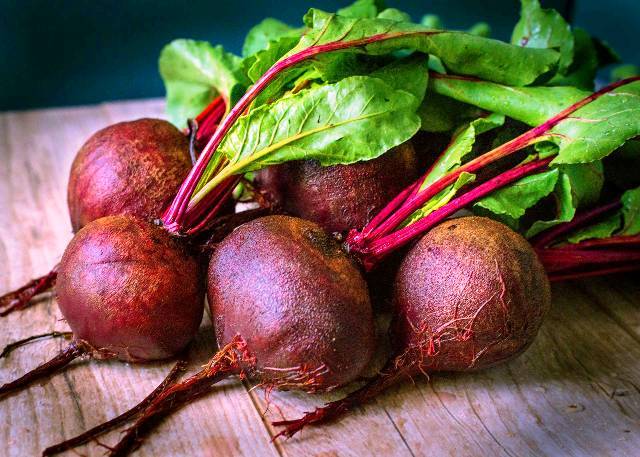
Beetroot also known as beet is one of the healthiest vegetables to eat. They belong to the Chenopodiaceous family whose history dates back to the ancient times. High in fiber and rich in vitamins A and C, beetroots have more iron than any other vegetable, including spinach. Beetroot helps in treating anemia, indigestion, constipation, gall bladder disorders, cancer, heart disease, piles and kidney disorders.
And if you grow it in your own kitchen garden or pot, then you will get more benefit from the vegetable.
Beetroot varieties to try
-
Chioggia (55 days)
-
Golden (55 days)
-
Crosby Egyptian (55 days)
-
Detroit Dark Red (59 days)
-
Early wonder (55 days)
-
Formanova (60 days)
-
Lutz Green Leaf (80 days)
Beetroot Cultivation
Climate requirement
Beetroots are a cool-season vegetable crop. This root vegetable grows very quickly and has many different varieties. Beetroots can survive cold and almost freezing temperatures, which makes them a perfect choice for people living in cool or hilly regions.
The crop requires at least four hours of sunlight in a day and grows best at the base of bigger plants such as capsicum and tomatoes or at a place where you have just grown leafy greens vegetables.
Soil preparation
Soil preparation is very important whether you want to plant the beetroots in pots or in the garden. Hence always use a medium-rich, well-drained soil that has been slackened with a garden fork. Also, add some compost and manure and stack the soil to improve drainage.
Planting
As the beetroot seeds have a solid outer coating hence it is better to soak them in a glass of water for the whole night before sowing. This will soften the seeds and promote germination. And if you are planting the seedlings then tenderly pull them apart and plant it at a distance of about 5 to 10cm to allow adequate space to grow.
Caring
To make sure that the beetroot is tender and juicy you must water it regularly ad carefully. Keep the soil damp, not fully wet, until the seeds have germinated. Then water it regularly for the first month and prevent it from getting dry.
A balanced supply of nutrients will help produce tasty beetroot and good-quality leaves. Also, use a liquid seaweed feed and fish fertilizer once a fortnight.
Harvesting
The best time to harvest the beetroot is when they are young i.e. about 2 to 3 months after planting. Often known as baby beets, these will be sweeter and juicier. The bigger they grow, the tougher they are and you will get less taste from it.
And the best way to pull them up is to slacken the soil around the beetroot and smoothly pull the plants until it dislodges.
You can also begin harvesting the leaves from the sixth week. Start with the outer leaves but don’t forget to leave a few so that the plant keeps growing.
Beetroot Benefits
-
Good For Heart
-
Lowers Blood Pressure
-
Helps Prevent Cancer
-
Good For Liver
-
Fights Inflammation
-
Boosts Energy Levels
-
Controls Blood Sugar
-
Promotes Brain Health
So enjoy your own home grown varieties of beetroot!!!!!
















